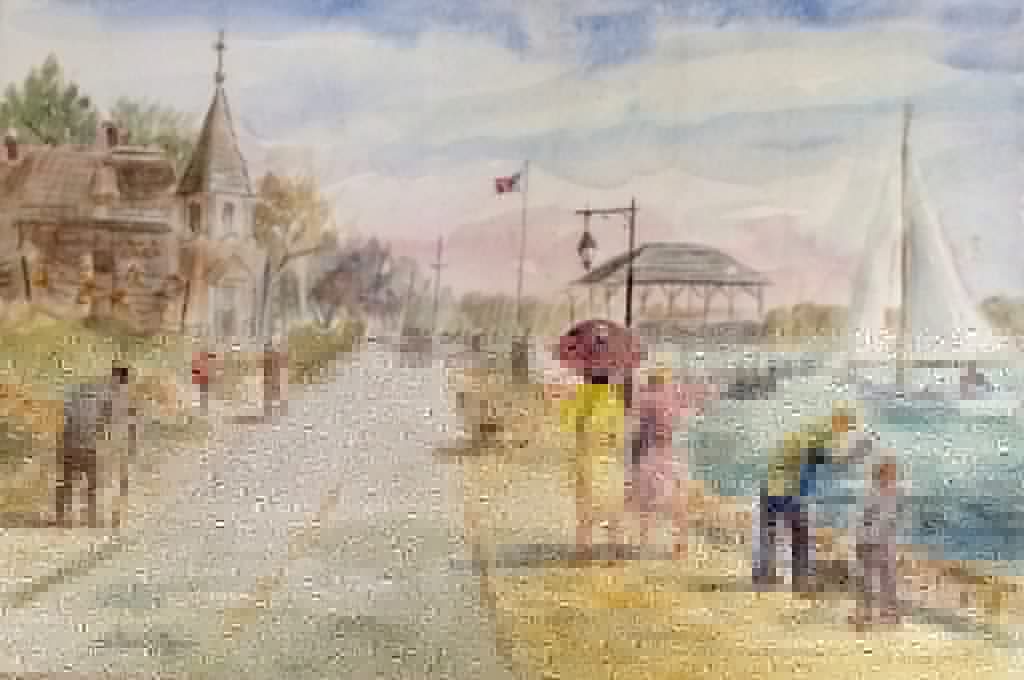In the years immediately following the American Civil War, during the onset of the Industrial Revolution and urbanization, Americans sought out art to once again bring a sense of beauty and expression to their lives. A select portion of these artists bypassed popular oil-based paints in favor of watercolor paints for their unique aesthetics. They also desired to overcome the challenges of working in this medium. Their artwork was often overlooked, as many associated watercolors with that of a woman’s pastime or child’s play.
However, this dedicated group of individuals came together in New York City on Dec. 5, 1866 to form the American Watercolor Society (AWS), an organization of artists motivated to spread the beautiful messages found in their strokes. The AWS’ organization of the 1866 watercolor exhibition in New York City brought this emerging style of art into the public spotlight, which shined bright in American art history through the 1920s, and some would argue that it continues to this day. By the 1920s, watercolor painting was considered a staple in America’s art scene, the stigma associated with it left far behind with memories of the war and slavery. Every year since their first exhibition, the AWS has sought to celebrate the rich history found in the work of many watercolorists and spread the medium to the general public.
Marking the 150th anniversary of the AWS’ first exhibition, the Philadelphia Museum of Art is currently displaying an exhibit titled “American Watercolor in the Age of Homer and Sargent” to the public through May 14. This display of more than 175 pieces by various American artists has been sourced from public and private collections across the country, a rare chance to see many of these works and their inspirations side by side. Artists Winslow Homer and John Singer Sargent are considered pioneers of the watercolor movement, and 40 of their pieces are being shown in the exhibit, as well as work by many of the other great artists they inspired. Homer was a coveted landscape artist and Sargent a leading portrait painter of his day; each drew from their background to form a unique approach to working with watercolors. Other featured artists include Thomas Eakins, Thomas Moran, John La Farge and Edwin Austin Abbey—to name a few of the many prominent or obscure artists you may see during your visit.
If you visit the museum to see these wonderful pieces of art, keep in mind the underestimated difficulty in creating such detailed and stunning images through the use of watercolors. The use of water pigmented with metallic flakes on paper allows for a surreal and splendid feel to an artist’s work, but this desirable effect is hard to achieve as one missed stroke of the brush may ruin an artist’s work. Once the pigment absorbs into the paper, an artist cannot simply paint over another color to fix a mistake, as the two will bleed together and form different colors. However, with precise attention to detail, artists have found ways to take advantage of these properties of the medium, creating the masterpieces that are currently on display today.
Another issue artists and curators encounter when working with this medium is the degradation of the paper and pigments used in these pieces, particularly in the older paintings from the 19th century. To combat this, the entire gallery will be illuminated by dimmer lights than the rest of the museum, because each minute of exposure to light will slowly fade the paintings. For two particularly delicate pieces, Eakins’ 1873 painting “John Biglin in a Single Scull” and Abbey’s 1882 piece “The Sisters,” curtains will be used to protect each piece from light while not being viewed. With the sensitivity of each of these paintings, many of these pieces are hardly viewed by the public, let alone all in one location.
Any fine arts lover or casual appreciator should not pass up this exhibit for its rarity and historic significance to the local and national art scene of the late 19th century and early 20th century. Not only will the 150th-annual AWS exhibit be taking place, many other exhibits will be on display throughout the museum. Under 20 miles east of Eastern University’s St. Davids campus, it is easily accessible by train and car, and students with a student ID will receive discounted admission to the museum. Students are encouraged to experience this one-of-a-kind display of America’s greatest watercolor paintings.
Sources: Courier-Post, MetroWest Daily News

